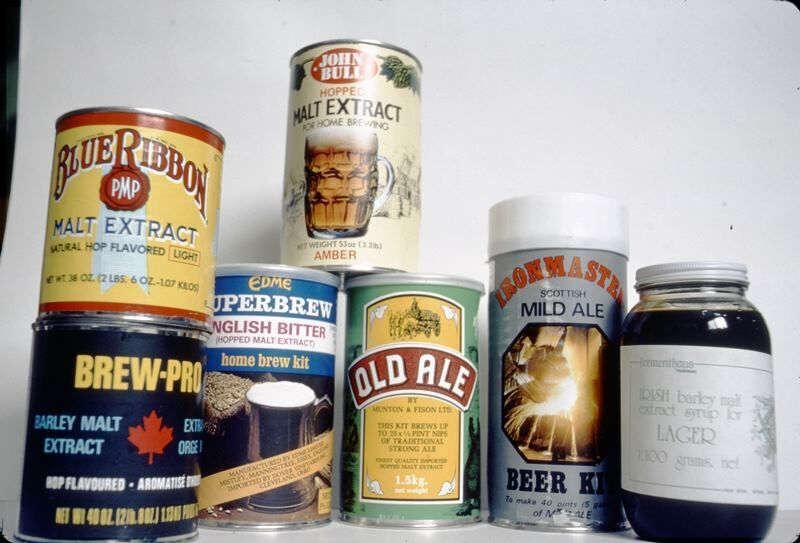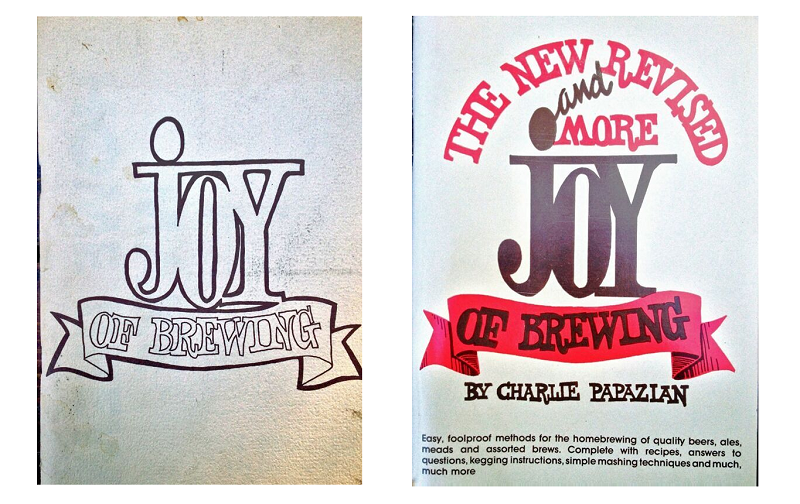Charlie Papazian Discovers Homebrewing and the Rest Is Our History

Charlie Papazian in 1977. (Photo courtesy Charlie Papazian)
Charlie Papazian was studying nuclear engineering at the University of Virginia in 1970 when a friend mentioned that a neighbor homebrewed. Would Papazian like to try some of the finished product?
He would.
The pair walked to a place off Montebello Circle in Charlottesville and met the neighbor, an older man who had been homebrewing since Prohibition 40 years before. His recipe was necessarily rudimentary—homebrewing was illegal and there simply weren’t that many ingredients available. So the neighbor used one can of Blue Ribbon malt extract, five to seven pounds of sugar, yeast and water.
The recipe made five gallons at a time, and the results weren’t altogether bad. To Papazian, it sure tasted better than what he was buying around town for 69 cents a six-pack.

Ingredients have come a long way since Charlie Papazian first started homebrewing in the 1970s. (Photo courtesy Charlie Papazian)
That initial homebrew set the collegian on a very unlikely career trajectory that is now winding down. The Brewers Association (BA) announced Jan. 2 that Papazian, who turns 67 this month, will step back from day-to-day activities at the organization he has led since cofounding its precursor, the American Homebrewers Association (AHA), in 1978. (Papazian also started the Association of Brewers, which subsumed the AHA in 1983, and then absorbed the Brewers Association of America in 2005 to form the current BA—got that?) He will now commence a kind of semi-retirement as the BA’s “founder, past president.”
The industry has long felt Papazian’s influence through the BA, the chief trade vehicle of the nation’s smaller operations, and the AHA, which continues to be the primary media voice of that singular passion and an advocate for vendors, retailers, etc.
Consumers, on the other hand, have likely felt Papazian’s influence most concretely through the Great American Beer Festival (GABF) he helped start and through the simple act he committed of putting his homebrewing expertise on paper.
I have covered the origins of the GABF in a previous column. Suffice to say, it was a risk when Papazian and Daniel Bradford, the AHA’s first paid employee and former publisher of All About Beer Magazine, pushed it forward in Boulder, Colorado, in 1982.
“That’s a great idea, Charlie, only what will you serve for beer?,” the critic Michael Jackson is said to have responded to Papazian after he mentioned the possibility of an American beer festival. There simply was not that much variety in American beer, nor that many brewers; and no large-scale tasting festival of the sort had ever been held in the U.S.
The GABF is now in its 35th year and the country’s largest beer festival.
As for Papazian’s influence through writing, that started in the mid-1970s, after he had relocated to Colorado and started teaching homebrewing courses in his spare time from a six-page syllabus he developed. In 1976, Papazian, who taught preschool and kindergarten by day, expanded that syllabus to 78 pages and self-published it with the title, The Joy of Homebrewing (somewhere along the line “Complete” would be added before “Joy”).
The American Homebrewers Association offered copies for $2.50 each, beginning in 1978, or $2 if you also bought a $4 annual membership in the association. Papazian continued to tweak the guide, increasing its scope and size so much that Bradford, then the AHA’s marketing director, saw the potential for turning it into a saleable book. He acted as Papazian’s agent, landing a small advance in early 1983 from Avon, a Manhattan-based publisher best-known for romance paperbacks and comic books.
Throughout the late spring and summer of 1983, Papazian spent mornings and afternoons writing and rewriting in longhand. In the evenings, after everyone else left the AHA offices at his home on 19th Street in Boulder, Papazian would type up the writing on the association’s lone computer.

Early covers for Papazian’s The Joy of Homebrewing. (Photo courtesy Charlie Papazian)
The Complete Joy of Homebrewing dropped in 1984, and connected almost immediately with the growing legions of homebrewers nationwide (one estimate pegged their number at 1.4 million, or the population of San Diego today). The book would go through several printings—and counting—and editions; and would become the best-selling homebrewing guide ever.
It wasn’t just Papazian’s expertise, honed since that first homebrewing experience in Charlottesville in 1970, that landed with readers. It was his breezy tone, one that had first convinced Bradford the syllabus-turned-guide could work as a book.
Papazian set that tone from the get-go, assuring his audience in the book’s introduction that “making quality beer is EASY!.” Fretting otherwise would only spoil things. “Relax. Don’t worry.” Those words became a kind of catchphrase for Papazian, one that he would soon expand: “Relax. Don’t worry. Have a homebrew.”
Read more Acitelli on History posts.
Tom Acitelli is the author of The Audacity of Hops: The History of America’s Craft Beer Revolution. His new book is a history of American fine wine called American Wine: A Coming-of-Age Story. Reach him on Twitter @tomacitelli.

Yup, he got me started back then and I still homebrew. I have all of this books.
Thanks Charlie.
Still relaxing since 1979.